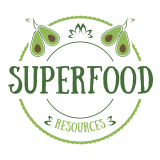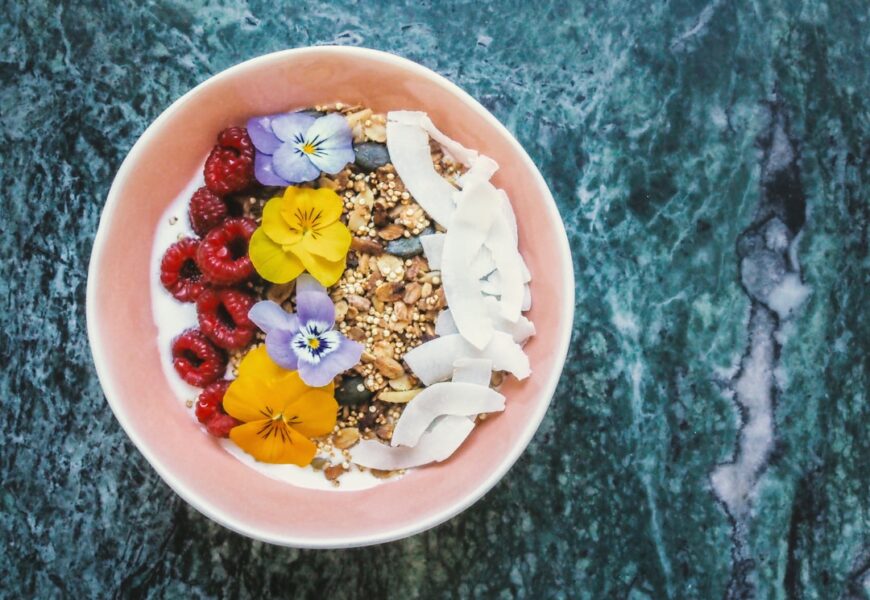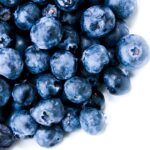How to Create a Balanced Superfood Diet Plan
Introduction
Are you ready to elevate your eating habits with a diet that’s not just good for you but also delicious and full of variety? A superfood diet plan might be just what you need. Superfoods are nutritionally dense foods considered exceptionally beneficial for health and well-being. Integrating these power-packed foods into a balanced diet enhances overall health, boosts energy levels, and supports disease prevention. In this blog, we’ll explore how to create a diet plan that incorporates a variety of superfoods, ensuring you get all the essential nutrients your body craves. Get ready to transform your meals into a vibrant spectrum of nutrients that promote a healthier, happier you!
Understanding Superfoods
 Image courtesy: Pexels
Image courtesy: Pexels
Definition and Benefits
Superfoods, though not a scientific term, are commonly used to refer to foods that are exceptionally rich in vitamins, minerals, antioxidants, and other health-boosting compounds. The primary allure of superfoods lies in their purported benefits, including improved energy levels, enhanced immune function, reduced inflammation, and support in preventing or managing chronic diseases. Due to their nutrient density, superfoods are highly recommended for inclusion in a daily diet as they provide essential nutrients that support overall health without contributing excessive calories.
Types of Superfoods
Superfoods come in a variety of forms and tend to stand out because they contain a high concentration of essential nutrients and antioxidants. Some popular examples include:
– Berries: Such as blueberries, strawberries, and acai, known for their high levels of antioxidants and vitamins.
– Leafy Greens: Including kale, spinach, and swiss chard, which are celebrated for their rich content of vitamins A, C, K, and several minerals.
– Nuts and Seeds: Like almonds, flaxseeds, and chia seeds, which offer healthy fats, protein, and fiber.
– Ancient Grains: Quinoa, amaranth, and barley are praised for their high protein content and fiber.
– Legumes: Beans and lentils are not only high in fiber and protein but also low in fat and calories.
– Superfruits: Such as goji berries, pomegranate, and noni, known for their unique antioxidants and health-promoting properties.
Incorporating these and other superfoods into one’s diet can lead to improved health outcomes due to their potent nutrient profiles.
Building a Balanced Superfood Diet Plan
Assessing Nutritional Needs
The first step in creating a balanced superfood diet plan is to assess individual nutritional needs, which can vary significantly based on factors like age, gender, activity level, existing health conditions, and specific health goals. Consulting with a healthcare provider or a registered dietitian can provide critical insights into what specific nutrients are needed in greater quantities and what should be limited. For instance, someone with iron-deficiency anemia will need a diet rich in iron-packed superfoods like lentils and spinach, whereas someone looking to improve heart health might focus on superfoods high in omega-3 fatty acids, such as walnuts and salmon.
Planning Superfood Meals
Planning meals around superfoods doesn’t have to be complex or time-consuming. The key is to include a variety of nutrient-rich foods in appropriate proportions to maintain overall health. Here are some tips on how to plan superfood meals throughout the day:
– Breakfast: Start the day with a smoothie bowl topped with a variety of berries, chia seeds, and a spoon of almond butter for a dose of antioxidants, fiber, and healthy fats.
– Lunch: A quinoa salad with mixed greens, sliced avocado, nuts, and grilled chicken or tofu can provide a balanced mix of protein, healthy fats, and vitamins.
– Dinner: Incorporate a hearty portion of steamed vegetables like broccoli and sweet potatoes alongside a serving of baked salmon or lentil pattie.
– Snacks: Opt for small snacks that pack a nutritional punch, such as Greek yogurt topped with goji berries and honey or a handful of mixed nuts.
Incorporating a Variety of Superfoods
Ensuring a variety of superfoods in the diet maximizes the range of nutrients consumed, which can help prevent deficiencies and promote a balanced diet. Each superfood offers different health benefits, so consuming a wide range is crucial. It’s also important to remember that no single food holds all the answers to health; a diet varied in superfoods in conjunction with other healthy foods is ideal. Variety not only improves nutrient intake but also enhances meal enjoyment, which is essential for maintaining a long-term healthy eating plan.
Superfood Recipes for Every Meal
Breakfast Ideas
Kickstart your morning with energizing breakfasts that incorporate superfoods to fuel your day right from the start. One simple yet delightful option is a smoothie bowl. Blend a mix of spinach, kale, a frozen banana, and a handful of blueberries with a little almond milk for the base. Top it off with sliced almonds, chia seeds, and a drizzle of honey for extra flavor and nutrients. Alternatively, if you’re in the mood for something warm and comforting, opt for quinoa porridge. Cook quinoa in almond milk, stir in a spoonful of cacao powder for a chocolatey touch, and sweeten with maple syrup. Add some fresh berries and a sprinkle of flaxseeds for a hearty breakfast.
Lunch Suggestions
For lunch, a vibrant superfood salad can be both satisfying and healthful. Start with a base of mixed greens like spinach and arugula, add in some chopped kale, and then throw in colorful toppings such as sliced avocado, pomegranate seeds, and walnuts. For protein, include grilled salmon or tofu. Dress the salad with a lemon-tahini dressing to round out the flavors. If you prefer a warm meal, try a sweet potato and black bean quinoa bowl. Top cooked quinoa with roasted sweet potatoes, black beans, corn, and a scoop of guacamole for a filling and nutritious lunch.
Dinner Options
Dinner can be an opportunity to wind down with a more substantive meal that still packs a nutritional punch. A great option is grilled chicken or tofu served with a side of sautéed kale and brown rice. Garnish with sesame seeds and a splash of soy sauce for an Asian-inspired twist. Another hearty choice could be a lentil and vegetable stew. Simmer lentils with diced tomatoes, carrots, and spinach in a vegetable broth. Serve with a slice of whole-grain bread for dipping.
Snacks and Desserts
Even your snacks and desserts can be part of your superfood diet plan. For a quick snack, apple slices with almond butter make a crunchy, sweet treat. For something a bit more substantial, try kale chips baked with a sprinkle of sea salt and nutritional yeast. When dessert time rolls around, a piece of dark chocolate (at least 70% cocoa) can be both indulgent and beneficial. Alternatively, blend frozen bananas and berries for a sweet, homemade sorbet that requires no added sugar.
Tips for Maintaining a Sustainable Superfood Diet
 Image courtesy: Pexels
Image courtesy: Pexels
Shopping for Superfoods
Navigating the grocery store for superfoods doesn’t have to be complicated. Start by making a list of the superfoods you need for your planned meals, which will help you avoid impulse buys and stick to your nutrition goals. Focus on seasonal and locally available produce to ensure freshness and cost-effectiveness. Health food stores and farmers’ markets can be great places to find high-quality organic superfoods. When shopping, consider bulk purchases for items like nuts, seeds, and grains to save money in the long run.
Meal Prepping and Planning
Meal prepping is a crucial component of maintaining a balanced superfood diet. Dedicate a day to prepare and cook large batches of staples like quinoa, brown rice, and roasted vegetables. Store them in serving-sized containers in the refrigerator for easy access throughout the week. You can also pre-make salads by storing the dressing separately to keep greens crisp. Planning your meals for the week ahead not only saves time but also ensures that you have healthy options readily available, preventing the temptation to opt for less nutritious alternatives.
Staying Consistant and Flexible
Sticking to a superfood diet requires consistency, but it’s also important to allow for flexibility. If you’re traveling or dining out, look for menu options that are in line with your dietary goals but don’t stress over the occasional indulgence. Listen to your body and adjust your diet as needed based on your physical responses and nutritional needs. The key is to find a balance that works for you and supports your health without feeling restrictive. Involve your family or friends in your meal plans for support and community, making the healthy journey a shared experience.
Conclusion
Crafting a balanced superfood diet plan is a key step toward enhancing your overall health and wellness. By incorporating a variety of nutrient-packed foods into your daily meals, you ensure your body receives the essential vitamins, minerals, and antioxidants it needs. Remember, the goal is to achieve a sustainable and enjoyable eating pattern that supports your health without feeling restrictive. Embrace the journey of exploring new foods and flavors, and make your nourishment a priority. Start small, keep it balanced, and enjoy the vibrant benefits of superfoods in your life.










